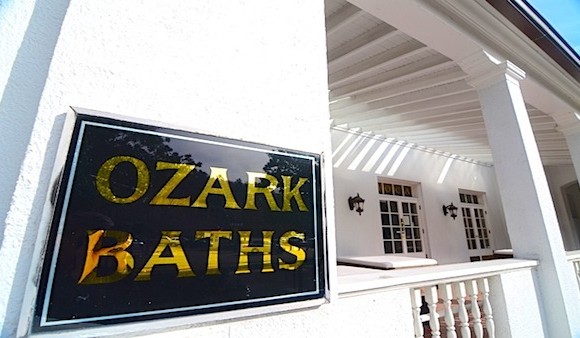Culture
Splish Splash: Takin’ a Bath in Hot Springs, Arkansas

Back in the days before Penicillin and Prozac, most people believed that a good soak in mineral water from natural hot springs was the best cure for “all that ails ya.” Bathing in geothermal spring water offered hope to those suffering a host of conditions such as polio and arthritis, as well as an opportunity to relax and rejuvenate the body.
So it’s not surprising that the town of Hot Springs, located in the foothills of the Ouachita Mountains of central Arkansas, developed into a popular resort during the latter part of the 1800s, attracting throngs of Victorian-era visitors. Its 47 natural geothermal springs and elegant bathhouses attracted patrons from all over the country.
Also not surprisingly, while nearly all of the attendants working at the various bathhouses were African-American, for the most part they were not permitted to bathe there. In 1878, the federal government constructed a bathhouse over a spring known as the “mud hole” where baths were free to indigents of all races. This wood frame bathhouse was replaced by a brick structure in 1891. Later, from 1898 through 1956, facilities at the indigent bathhouse were segregated by race and sex.
A handful of Hot Springs bathhouses did provide bathing opportunities to African-Americans who could afford to pay, but only during the least desirable hours. However, the first black-owned bathhouse designed exclusively for African-American clients opened in 1904. Named the Crystal Bathhouse, it was destroyed by a major fire in 1913, which burned 50 city blocks of the community.
In late 1914, the Pythian Bathhouse and Sanitarium opened on the site, and continued serving exclusively African-American clientele until the end of segregation in 1964.
In 1922, a second black-owned bathhouse opened in the city. The Woodmen of the Union Building also housed a hotel, theater, and a hospital – all for an exclusively African-American clientele. The African American National Baptist Convention purchased the building in 1948, and hosted its annual convention there through the early 1980s.
Today, none of the original African-American bathhouses are in operation, but Bathhouse Row – a collection of eight elegant historic bathhouses along Hot Spring’s Central Avenue – is a National Historic Landmark, adjacent to the popular Hot Springs National Park.
For more information:
Hot Springs National Park: http://www.nps.gov/hosp/index.htm
Hot Springs Tourism: http://www.hotsprings.org

-

 Featured10 months ago
Featured10 months agoCalifornia Is the First State to Create A Public Alert for Missing Black Youth
-

 Featured10 months ago
Featured10 months agoAfrican American Leaders Stay the Course Amid Calls for President Biden To Bow Out of Race
-

 Featured10 months ago
Featured10 months agoThe Debate Fallout Lands on Both Candidates
-

 Featured9 months ago
Featured9 months agoPresident Joe Biden Decides to Withdraw from the Presidential Race
-

 Featured10 months ago
Featured10 months agoPresident Joe Biden Describes Shooting of Donald Trump As ‘Sick’
-

 Featured9 months ago
Featured9 months agoIn One of His Final Speeches as President, Biden Says It’s Time for ‘Fresh Voices’

